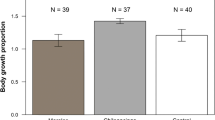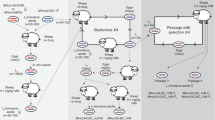Abstract
MILLIONS of cases of Chagas' disease exist in Central and South America1. Apart from being virtually incurable, a major problem in this disease is symptomless carriers harbour trypanosomes all their lives but it is often difficult to demonstrate the parasite2. At present, the simplest and most sensitive method of diagnosis3 is to feed uninfected triatomine bugs on the suspected case and subsequently to examine a faecal sample from the bug for the presence of trypanosomes. There is, however, great variation both within and between species of Triatominae, in their susceptibility to infection with Trypanosoma cruzi (see, for example, refs 4 and 5), and though a genetic basis for this variation in susceptibility has been suggested4, it has not been verified. Obviously, the production of a highly susceptible strain of triatomine bug that would provide a quick and accurate diagnosis of chronic Chagas' disease would be a distinct advantage. I report here on the selection of both susceptible and refractory lines of Rhodnius prolixus, and the results of this selection programme are related to the genetic control of susceptibility to infection with T. cruzi.
Similar content being viewed by others
References
Handler, B., Nature, 259, 357 (1976).
Marsden, P. D., Mott, K. E., and Prata, A., Gaz. med. Bahia., 69, 65–69 (1969).
Bull. Wld Hlth Org., 50, 459–479 (1974).
Phillips, N. R., and Bertram, D. S., J. Med. Ent., 4, 168–174 (1967).
Miles, M. A., Patterson, J. W., Marsden, P. D., and Minter, D. M., Trans. R. Soc. trop. Med. Hyg., 69, 377–382 (1975).
Lumsden, W. H. R., Herbert, W. J., and McNeillage, G. J. C., Technique with Trypanosomes (Churchill Livingstone, Edinburgh, 1973).
Mshelbwala, A. S., and Ormerod, W. E., J. gen. Microbiol., 75, 339–350 (1973).
Sherlock, I. A., and Almeida, S. P., Revta Soc. Bras. Med. Trap., 7, 87–98 (1973).
Falconer, D. S., Introduction to Quantitative Genetics (Oliver and Boyd, Edinburgh, 1967).
Falconer, D. S., Cold Spring Harb. Symp. quant. Biol., 20, 178–196 (1955).
Macdonald, W. W., in Genetics of Insect Vectors of Disease (edit. by Wright, J. W., and Pal, R.), (Elsevier, Amsterdam, 1967).
McGreevy, P. B., McClelland, G. A. M., and Lavoipierre, M. M. J., Ann. trop. Med. Parasit., 68, 97–109 (1974).
Hovanitz, W., Am. J. Hyg., 45, 67–81 (1947).
Falconer, D. S., Int. Union biol. Sci. Naples, B 15, 16–41 (1954).
Author information
Authors and Affiliations
Rights and permissions
About this article
Cite this article
MAUDLIN, I. Inheritance of susceptibility to Trypanosoma cruzi infection in Rhodnius prolixus. Nature 262, 214–215 (1976). https://doi.org/10.1038/262214a0
Received:
Accepted:
Published:
Issue Date:
DOI: https://doi.org/10.1038/262214a0
- Springer Nature Limited
This article is cited by
-
The inheritance of radiation induced semi-sterility in Rhodnius prolixus
Chromosoma (1976)





